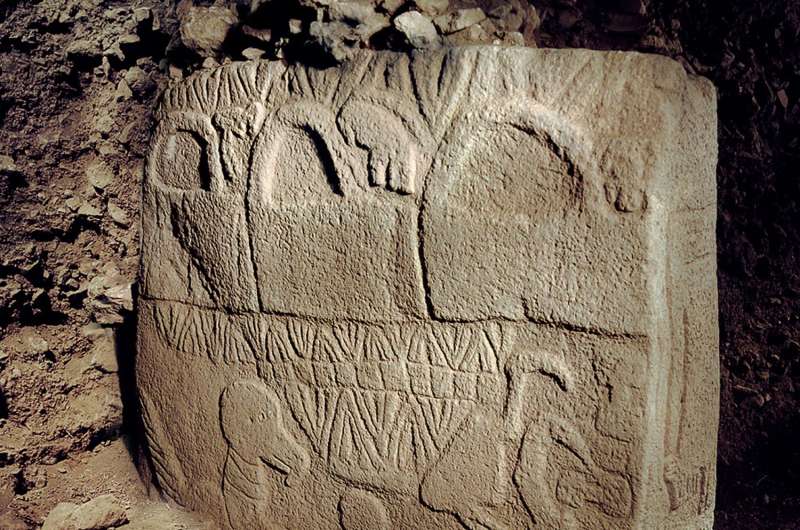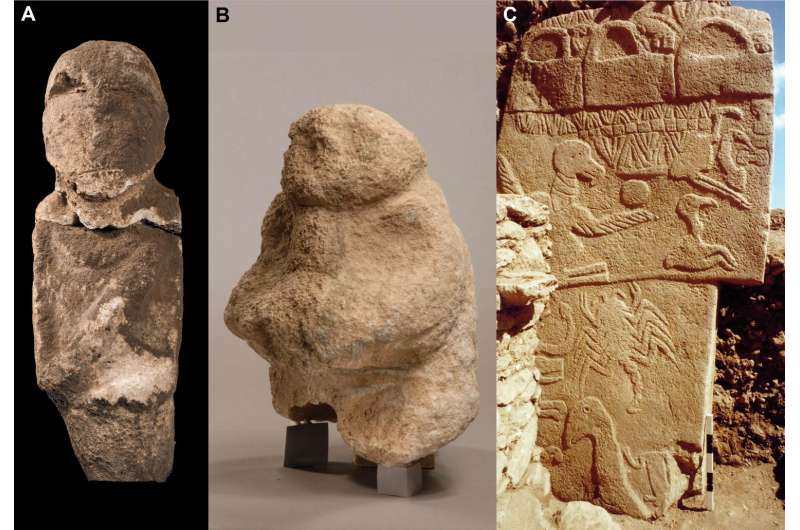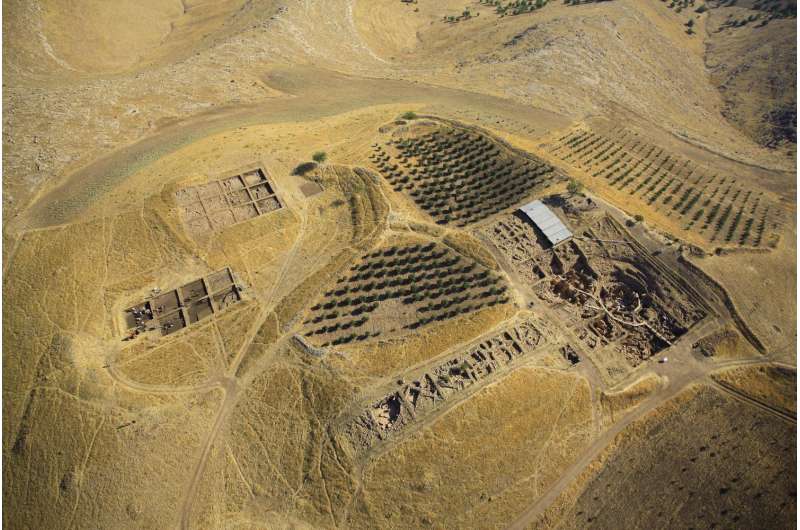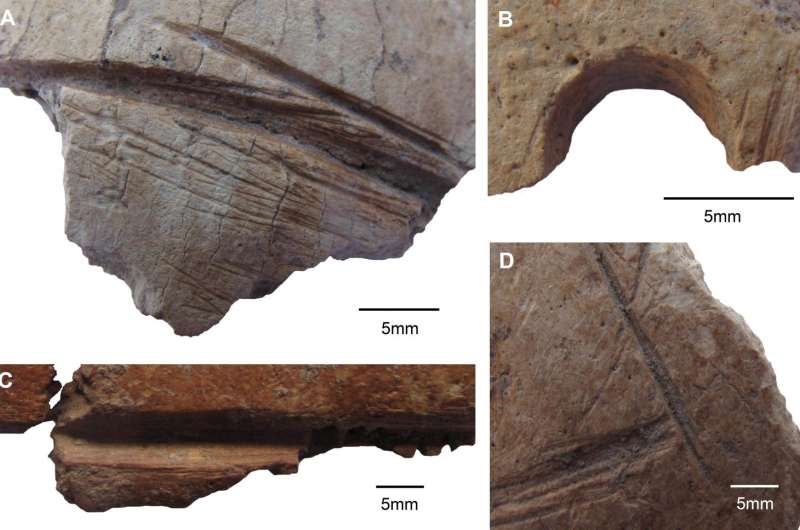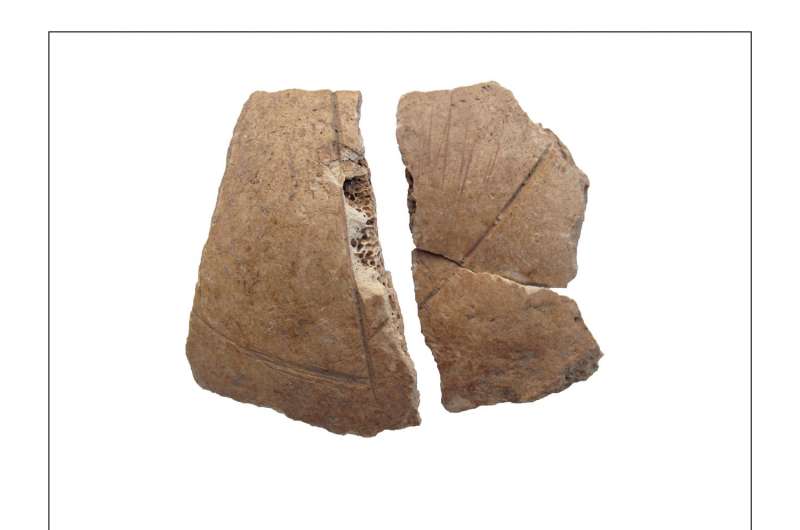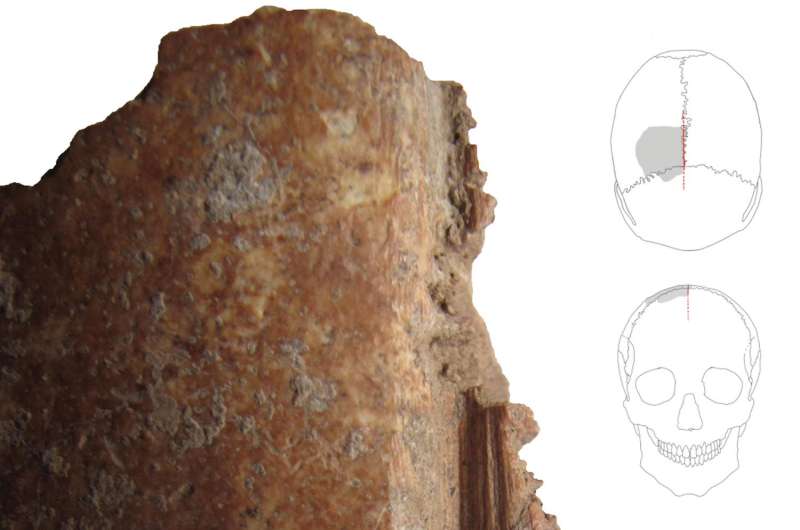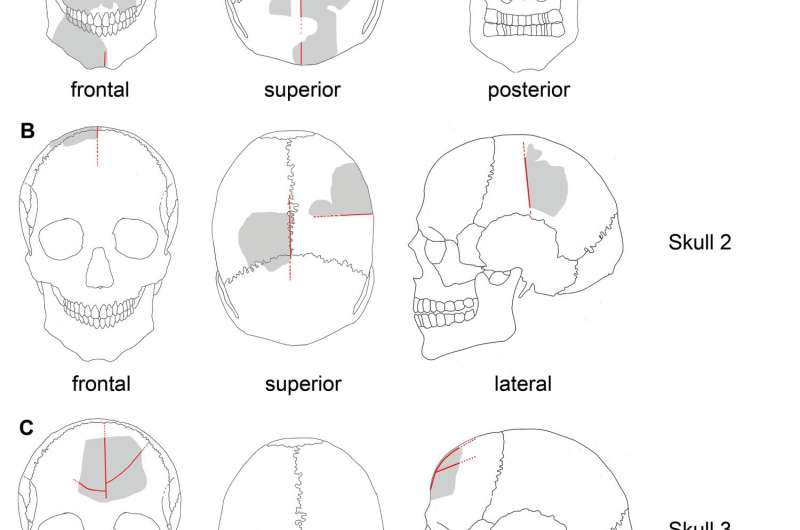A pillar from Building D at Göbekli Tepe seen from the southeast. Credit: German Archaeological Institute (DAI)
(Phys.org)—A team of researchers with the German Archaeological Institute has found long, deliberate marks carved into ancient skulls found at the Göbekli Tepe dig site. In their paper published on the open access site Science Advances, the group describes the skull fragments they have been studying and offer some possible explanations for the markings they found.
Göbekli Tepe is the name given to an ancient temple in what is now southern Turkey—it was built approximately 11,000 years ago, during the Stone Age. Workers have been at the site for the past 20 years removing the soil covering the tall pieces of T-shaped limestone, some of which rise up to 18 feet from the ground. Thus far, researchers at the site report that it does not appear that the temple was used as living quarters, but was instead a temple where the locals gathered to perform rituals. One such ritual appears to have involved using human skulls—hundreds of them, broken into pieces, litter the areas between the limestone columns. These findings have caused researchers to label the site as evidence of one of the earliest skull cults. In this new effort, the researchers report that some of the skull pieces have been found to have lines cut into them.
The team determined that the skull fragments they found with the unique marks on them belonged to just three individuals—each had deep straight-line grooves carved into the bone and one of them also had a hole drilled through its top. The grooves were found to measure between 0.2 and 4 millimeters deep and were clearly made by a person using stone tools, rather than by another animal or other natural process. Also, it was determined that the grooves were made after the person had died—there was no bone growth suggesting natural repair. Also, it appeared likely that the grooves had been made shortly after the person had died, while the bone was still relatively elastic.
Anthropomorphic depictions from Göbekli Tepe. (A) Intentionally decapitated human statue (height, 60 cm). Credit: Nico Becker, Göbekli Tepe Archive, DAI. (B) The gift bearer holds in his hands a human head (height, 26 cm). (C) Pillar 43 (building D) with low relief of an ithyphallic headless individual, one arm raised (bottom right). Credit: Dieter Johannes and Klaus Schmidt, Göbekli Tepe Archive, DAI
Because it is not clear why the grooves appeared only on three skulls, the researchers were left to generate theories—they believe one of the likeliest possibilities is that the grooves were made to hold cords in place while the skull was hoisted onto a pole using the drilled hole—possibly as a way to scare off enemies.
-
Aerial view of Göbekli Tepe. Credit: German Archaeological Institute (DAI)
-
Details of artificial skull modifications. A, C, D: carvings, B: drilled perforation. Credit:Julia Gresky, DAI
-
Frontal bone fragment of skull 3 with carvings (1) and cut marks (2,3). Credit: Julia Gresky, Juliane Haelm, DAI.
-
Skull fragments with cut marks. Credit: German Archaeological Institute
-
Schematic drawings of Göbekli Tepe skulls. Gray, preserved elements; red, modifications. Credit: Julia Gresky, Juliane Haelm, DAI.
More information: Modified human crania from Göbekli Tepe provide evidence for a new form of Neolithic skull cult Science Advances 28 Jun 2017: Vol. 3, no. 6, e1700564, DOI: 10.1126/sciadv.1700564
Abstract
Archaeological excavations at Göbekli Tepe, a transitional Neolithic site in southeast Turkey, have revealed the earliest megalithic ritual architecture with characteristic T-shaped pillars. Although human burials are still absent from the site, a number of fragmented human bones have been recovered from fill deposits of buildings and from adjacent areas. We focus on three partially preserved human skulls, all of which carry artificial modifications of a type so far unknown from contemporaneous sites and the ethnographic record. As such, modified skull fragments from Göbekli Tepe could indicate a new, previously undocumented variation of skull cult in the Early Neolithic of Anatolia and the Levant.
Journal information: Science Advances
© 2017 Phys.org
